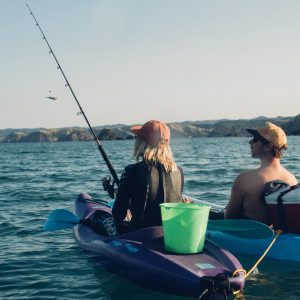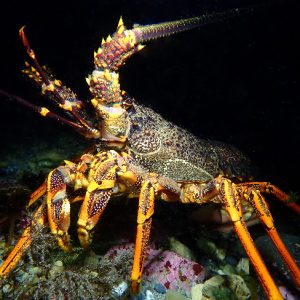UPDATE 2: Rules applying to recreational catch of rock lobster in CRA2 have changed as of 1 July 2020. We await information from Fisheries New Zealand and will advise details when these are available.
UPDATE: MPI has advised LegaSea that the decision to change the crayfish bag limits in CRA2 not yet been ratified by Cabinet and the new rules will not be changing on April 1. We will be updated the moment this or any other change has been confirmed.
April 1st is commonly known as April Fool’s Day. In terms of crayfish it is the day that the rules change for recreational fishers on the northeast coast, but who would know? LegaSea is concerned that not enough effort is going into educating fishers on the new rules.
It was only by chance, when reading another management document last December, that our team discovered the Minister had decided to change to rules relating to cray fishing. As of April 1st, recreational fishers in Area 2, from Waipu in the north, through the Hauraki Gulf down to East Cape, will have a reduction in the daily bag limit from six to three. We earlier supported this measure as a means to conserve and help rebuild the severely depleted stock of crayfish.
We rejected proposals to make telson clipping mandatory for recreationally caught crayfish on the northeast coast. Telson clipping requires recreational fishers to clip the last third of the middle part of the tail fan (the “telson”) of every legal sized red rock lobster that will be kept. This indicates it cannot be bought, sold or traded.
LegaSea wholeheartedly supports compliance initiatives to stop illegal take by fishers across all sectors. In our December 2018 submission we expressed doubts about the effectiveness of telson clipping as a deterrent for large-scale poaching. In our view, the poachers are intent on avoiding detection and a whole tail does not prove that the crayfish was legally landed by a commercial fisher for sale.
In reality, telson clipping does the opposite intended.
Telson clipping legitimises the illegitimate by making every Area 2 crayfish that is not telson clipped available for sale. This outcome is not desirable when crayfish are fetching around $100 per kilo on the black market.
In our last submission we noted the costs of introducing telson clipping across the whole CRA 2 management area. We submitted that MPI compliance resources would be better used to target the individuals who are taking, selling or buying illegal crayfish.
We also recommended the Minister of Fisheries, Stuart Nash, ask his Ministry for evidence to demonstrate that telson clipping had resulted in a measurable and significant reduction in the volume of crayfish being sold illegally in the South Island. We weren’t convinced at the time, and we’re not sure if that information was ever produced.
A simple and realistic solution to combating the illegal trade of rock lobster is traceability and identification of commercial catch destined for the local market. This system would be much harder for poachers to circumvent than telson clipping.
Traceability is becoming increasingly popular amongst restauranteurs and consumers because it provides added benefit and assurance to everyone in the food chain.
What’s more, if you’re paying $145 per kilo for your crayfish, you’d be an April Fool if you didn’t ask where and when it was caught.





